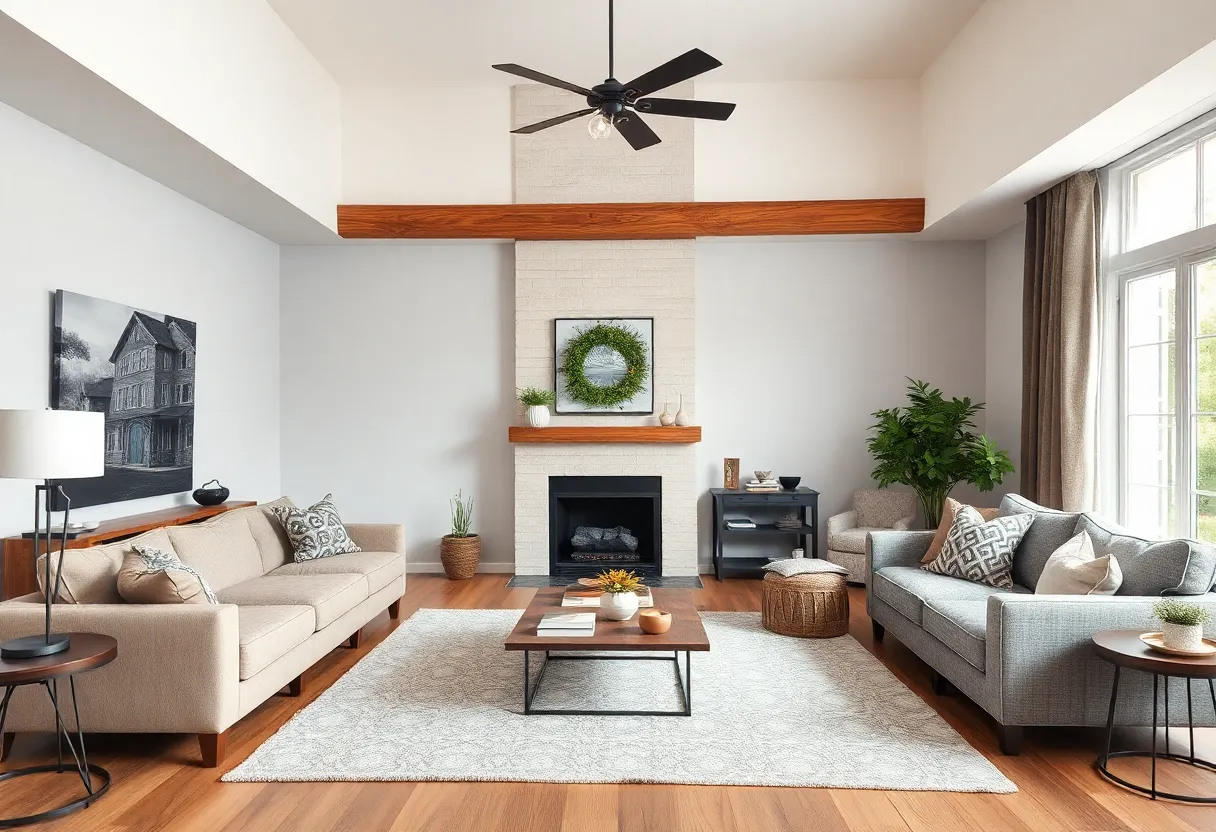How to Choose the Right Renovation Style to Elevate Your Home’s Aesthetic Appeal
Transforming a home through renovation is a powerful way to enhance both its visual appeal and functionality. However, selecting the appropriate renovation style requires careful consideration of various factors. The ideal design should harmonize with your lifestyle, architectural environment, personal preferences, and budget constraints. This comprehensive guide will explore how to identify the most suitable renovation style to elevate your home’s aesthetic appeal, ensuring a cohesive and timeless outcome.
Understanding the Importance of Style Selection
Choosing the right style isn’t merely about aesthetics; it influences harmony, comfort, and the overall value of your property. An ill-fitting style can result in dissonant spaces, reducing visual appeal and even affecting resale potential. Conversely, a well-chosen style reflects personal identity while respecting architectural context, creating a seamless and appealing environment.
Factors Influencing the Choice of Renovation Style
1. Architectural Style of Your Home
The existing architecture often dictates feasible styles. For example, a Victorian house naturally complements Victorian or Edwardian themes, while a modern flat pairs well with minimalist or contemporary styles. Maintaining architectural integrity enhances cohesion and minimizes costly modifications.
2. Personal Preferences and Lifestyle
Ultimately, your personal taste shapes the ideal style. Consider what appeals visually and functionally. Do you prefer warm, cozy environments, or sleek, modern spaces? Your daily habits and preferences should align with the style to ensure long-term satisfaction.
3. Budget Constraints
Some styles entail higher costs due to materials, custom features, or construction complexity. Assess your budget realistically and select styles that offer the aesthetic you desire within your financial limits. Avoid overextending finances, which can compromise quality and longevity.
4. Cultural and Regional Context
Local climate, cultural influences, and regional materials influence suitable styles. For instance, tropical climates favor open layouts and natural ventilation, while colder regions benefit from insulated, cozy designs. Respecting regional context enhances both functionality and authenticity.
Identifying Popular Renovation Styles
1. Modern
Characterized by clean lines, neutral color palettes, and minimal ornamentation. Emphasizes functionality and simplicity. Modern style often incorporates large windows, open floor plans, and sleek materials like glass, steel, and concrete.
2. Contemporary
More fluid and adaptable than modern style. Incorporates current design trends, mixing elements from various eras. Features innovative materials, bold accents, and an emphasis on sustainability and smart technology.
3. Traditional
Draws inspiration from classic European design, featuring detailed moldings, rich wood finishes, and symmetrical layouts. Creates a warm, inviting atmosphere rooted in timeless elegance.
4. Rustic
Focuses on natural materials such as wood, stone, and wrought iron. Embraces imperfections and craftsmanship. Rustic design fosters a cozy, welcoming environment with earthy tones and textures.
5. Minimalist
Prioritizes simplicity and clutter-free spaces. Uses monochrome palettes, sleek surfaces, and concealed storage. The goal is to create serene environments that promote calm and focus.
6. Industrial
Inspired by warehouses and factories. Features exposed beams, ductwork, brick walls, and utilitarian fixtures. Often incorporates reclaimed materials, blending raw textures with modern accents.
Conducting a Personal Style Assessment
1. Gather Inspiration
Use magazines, online platforms, and local showrooms to compile images that resonate with you. Focus on images that evoke the feeling you want to achieve in your home.
2. Define Your Preferences
Create a mood board or list specific features you prefer. Note color schemes, materials, furniture styles, and spatial arrangements that inspire you.
3. Consider Your Lifestyle Needs
Evaluate what functions are essential: Do you need a home office, a large kitchen, or spaces tailored for entertaining? Preferences should align with practical requirements.
4. Assess Existing Architecture and Layout
Examine structural features. Some styles work better with open concepts, while others thrive in compartmentalized spaces. Compatibility ensures a balanced and functional renovation.
Aligning Renovation Style with Architectural Integrity
Preservation vs. Innovation
Decide whether to preserve the original features or introduce dramatic changes. Maintaining architectural details often necessitates selecting complementary styles. Conversely, a bold style may involve structural modifications.
Blending Styles
Modern homeowners often blend styles to create personalized spaces. For instance, pairing rustic elements with sleek modern furniture—a trending approach known as eclectic design—can produce unique, cohesive environments.
Respecting Authenticity
When renovating heritage or historic homes, select styles that respect and enhance original features. This approach maintains authenticity and can increase heritage value.
Practical Tips for Choosing Your Renovation Style
1. Prioritize Cohesion
The chosen style should be consistent across rooms to create flows and sightlines that feel intentional. Use a unified color palette or material theme to tie different spaces together.
2. Consider Future Flexibility
Select adaptable styles that allow for future updates. Styles like mid-century modern and minimalist are versatile and timeless, facilitating changes without extensive overhaul.
3. Evaluate Lighting and Color Schemes
Different styles respond distinctly to lighting. Modern and minimalist designs benefit from abundant natural light and neutral tones, while rustic or traditional styles often incorporate warmer, richer colors.
4. Consult Professionals
Engage architects, interior designers, or renovation specialists to evaluate your ideas. Experienced professionals can advise on architectural compatibility and help visualize outcomes.
Balancing Personal Style with Practical Considerations
While personal preferences are vital, practical aspects such as durability, maintenance, and energy efficiency cannot be overlooked. For example, a rustic style with reclaimed wood demands proper sealing and treatment to prevent deterioration. Similarly, modern materials may require specific cleaning routines. Achieving an aesthetically appealing and sustainable space requires integrating style with practicality.
The Role of Sustainability in Renovation Style
Incorporating eco-friendly elements aligns with contemporary renovation trends. Styles like sustainable modern or eco-conscious minimalist incorporate renewable materials, energy-efficient systems, and low-impact design principles. This not only enhances aesthetic appeal but also reduces environmental footprint.
Final Thoughts: Making an Informed Decision
Choosing the appropriate renovation style is a strategic process. It involves analyzing your home’s architecture, reflecting on personal preferences, considering lifestyle needs, and respecting regional influences. The goal is to craft a space that is visually appealing, functional, and enduring.
Maintain key information; avoid unnecessary filler or repetition. Focus on the core facts and context relevant to the blog title, avoiding vague statements. Keep the tone professional and balanced; prioritize clarity and objectivity.
Remember, a well-executed renovation style not only elevates aesthetic appeal but also embodies your lifestyle and personal taste. Invest time in research, planning, and professional guidance to ensure your home’s transformation is both beautiful and functional.
Author: STAFF HERE CLEVELAND WRITER
The CLEVELAND STAFF WRITER represents the seasoned team at HERECleveland.com, your premier source for actionable local news and information in Cleveland, Cuyahoga County, and beyond, delivering "news you can use" with in-depth coverage of product reviews for personal and business needs, local business directories, politics, real estate trends, neighborhood insights, and state news impacting the region—backed by years of expert reporting and robust community input, including local press releases and business updates, while providing top reporting on high-profile events like the Rock and Roll Hall of Fame inductions, Cleveland International Film Festival, and holiday parades, alongside key organizations such as the Cleveland Clinic, Cleveland Orchestra, and Great Lakes Science Center, plus leading businesses in manufacturing and healthcare like Sherwin-Williams and University Hospitals, and as part of the broader HERE network including HEREDayton.com, offering comprehensive, credible insights into Ohio's vibrant landscape. HERE Cleveland HERE Dayton





